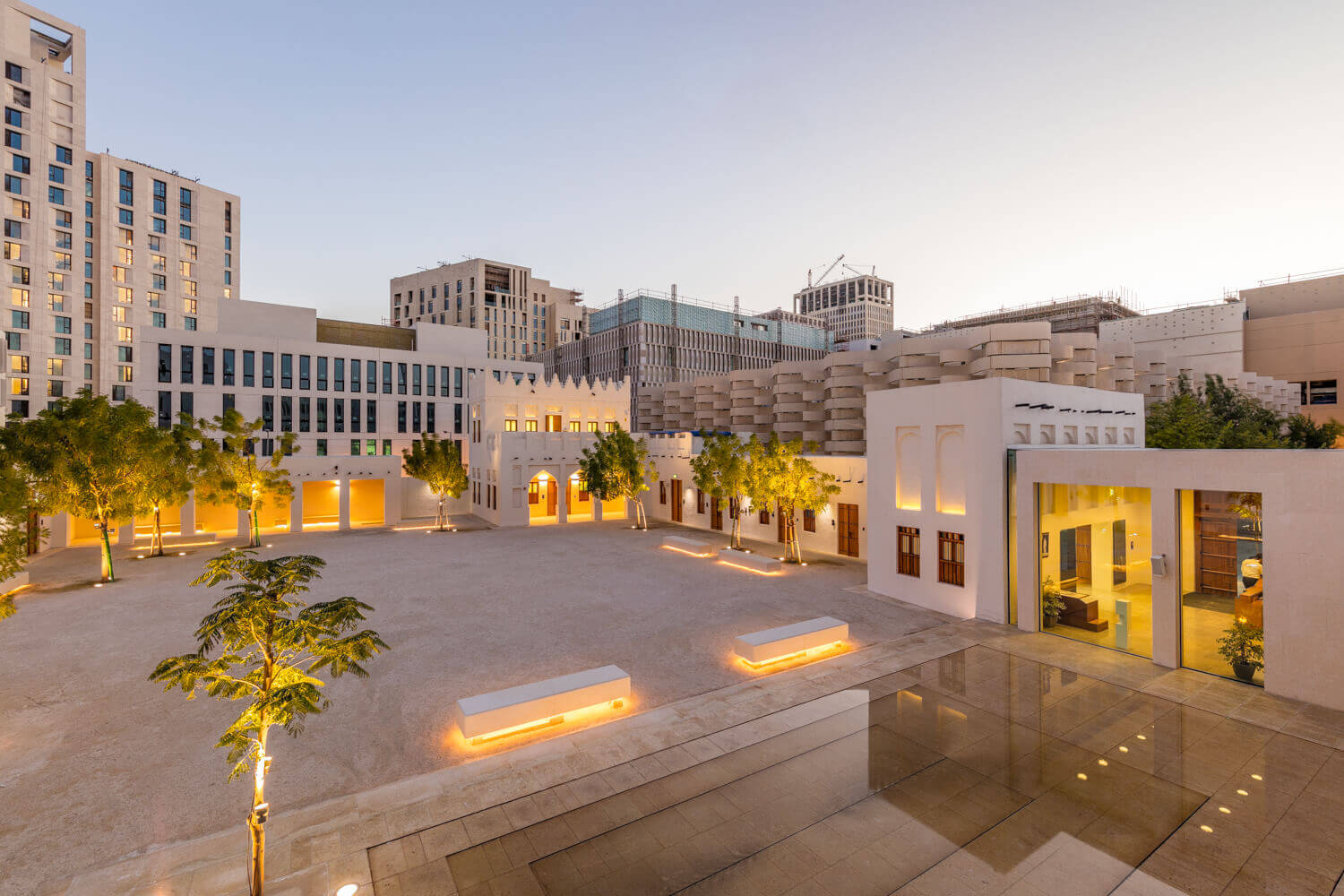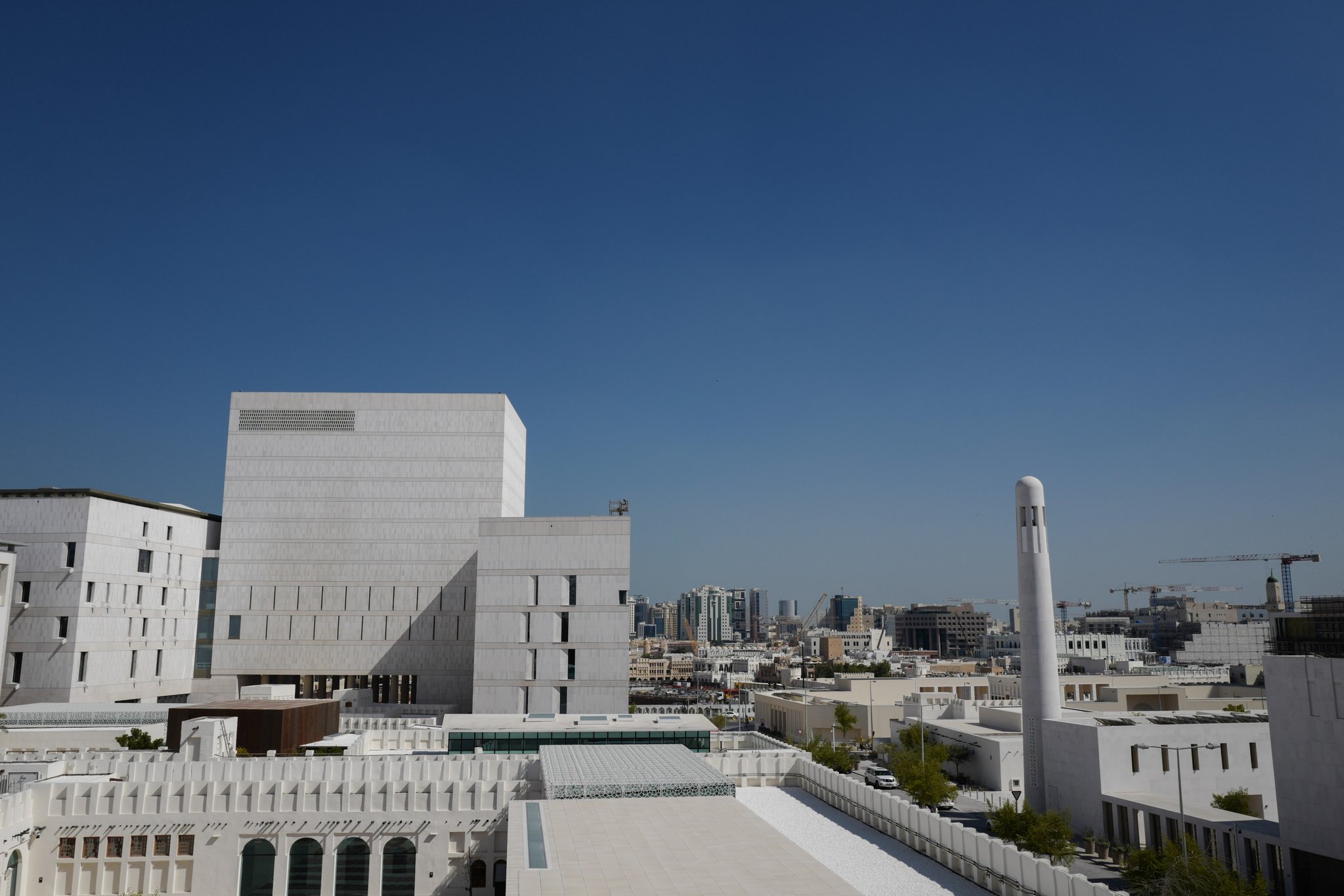Evaluating Urban Heritage In Doha
Historic urban cores are the backbone of a city’s cultural identity. London; Rome; Istanbul; and Tokyo are all cities that have existed for centuries, and are places that have captured the eyes and hearts of the world. These cities all share something in the fact that they have a defined cultural identity that survived through the preservation and maintenance of the socio-cultural, environmental and economic characteristics of their built heritage. The preservation of built heritage represents a collection of ‘local memories’ that allows citizens to interact, share, and experience urban history as the city lives and breathes. In an age where cities all over the world compete to attract global markets, cultural heritage acts as a magnet for tourists and investors. It is no surprise then that there is a great deal of interest for cities that seek to penetrate the global stage such as Doha, to market themselves not only as new and cutting edge but as centers of culture and history.
Jane Jacobs writes extensively in The Death and Life of Great American Cities on preservation issues and the need for old buildings: “Cities need old buildings so badly it is probably impossible for vigorous streets and districts to grow without them. By old buildings I mean not museum-piece old buildings, not old buildings in an excellent and expensive state of rehabilitation–although these make fine ingredients–but also a good lot of plain, ordinary, low-value old buildings, including some rundown old buildings”.







The Gulf states present extremely complicated and interesting issues in planning and governance that are entirely exclusive to the region, largely due to the massive influx of wealth from oil revenues in the 70s. The advent of modernization from oil demanded a substantial amount of development, and it had to happen fast. Our idea and preconceptions of Gulf cities as ‘skyscrappers sprouting out of the harsh, hot deserts’ have emerged out of this demand to develop, yet this statement disregards the heritage, culture, and history of its inhabitants and its people. The claim that places like the Gulf states, including Qatar, as having no heritage is reductionist. I believe that this claim stems from the lack of architectural conservation practices in Doha over the past 50 years. In this article, I attempt to deconstruct the claim of Doha as a place that lacks heritage through the context of architectural preservation and highlight current and old conservation attempts in the city.
Today in Doha, there is a severe lack of authentic historic districts and buildings. The urban form of Doha, much like other Khaleeji cities, is sleek, modern, and futuristic. The administrative heart of Doha, West Bay, is dominated by cutting edge shiny skyscrapers. Commercial development in downtown Doha, either destroyed, demolished or left its old districts to rot by the forces of urban decay. Change and progress have always been used as justification for the demolition of old districts in Doha, revenues from oil and an increasing population size demanded rapid development. The population growth required a quick response from the government to establish Doha’s first masterplan in 1972 that would redevelop Doha’s traditional low-rise residential quarters to high-density commercial and office buildings. This action acted as a means of redistributing oil wealth through the financial transaction of buying old residential quarters by the government from citizens. This encouraged the local population to move from old Doha to its suburbs. Today only a few districts and buildings survive in downtown Doha, and Doha’s supposedly ‘aggressive preservation policies and projects’ focus on “re-imaginings of indigenous architectural styles” and inventing their own new individual and distinct tangible architectural identity through urban renewal projects such as Msheireb Downtown Doha.
The Souq Waqif restoration project and the Msheireb Downtown Doha project both market themselves as projects that save endangered buildings. Ironically, Souq Waqif’s restoration in 2006, had buildings constructed after 1950 demolished, while older buildings were preserved. Msheireb Downtown Doha preserves its historic district and buildings and reappropriates it into museums that show off the history of the state, and the city itself and in its goal of reviving the old commercial district while introducing “a new architectural language that is modern, yet inspired by traditional Qatari heritage and architecture”, it demolished much of the old district with only four palaces and courtyards surviving. The old buildings of Msheireb Downtown Doha and Souq Waqif are the museum-piece old buildings that Jane Jacobs seemingly talked about. Conservation attempts in Doha neglect ‘normal’ old buildings and districts.
So what can be done about this in Doha? Djamel Boussaa has an article in the Journal of Architectural Conservation that details recommended actions to be taken for Doha’s Al-Asmakh historic district:
Stop demolition of buildings in Al Asmakh;
Document and survey the remaining houses in Al Asmakh;
Take a bottom-up rather than a top-down approach in deciding about the future of Al Asmakh;
Start restoration work one house at a time to avoid massive displacement of the workers;
Once the rehabilitation work is completed, priority should be given to the original owners to come back; in the case that they refuse, the houses can be made available for rent to expatriates who will be able to look after them;
Limit accessibility to the area by car and encourage pedestrianized streets;
Create physical links through bridges or tunnels with Souk Waqif and Msheireb;
Rehabilitate the area for mixed-use activities, such as cultural, educational and administrative business in addition to the main residential activity of the area.
The Qatar National Development Framework (QNDF) extensively discusses issues of historic preservation and creating townships, particularly maintaining Al-Wakra as a historic town, and focusing in on redeveloping commercial downtown Doha into a cultural and historic site. The plan also calls for immediate action on identifying and protecting historic mosques through registering them as heritage buildings by the Qatar Museum Authority and the Ministry of Endowments and Islamic Affairs. Moreover, the QNDF also acknowledges the deterioration and the authenticity of historic sites within Doha’s downtown: “Rapid demolition and deterioration of historic buildings and sites and an over-reliance on replica buildings are depriving areas and communities of their genuine historical and cultural value”.
The QNDF also calls for immediate policy actions, including establishing conservation areas to protect traditional villages, forts, and other historic buildings. It states that Zones 4 and 5 (Al-Najada, Al Asmakh, and Msheireb) of Downtown Doha, will be considered for priority designations. The policy action also states that applications for development within Conservation Areas will need to include developer commitments to the retrofitting or reuse of listed buildings that preserve their historic or cultural character and materials. The plan also calls for the implementation and preparation of a National Heritage Strategy and a Cultural Master Plan which would: “identifies, protects and allows for controlled redevelopment of nationally important archaeological, cultural and historic buildings, sites and contextual areas”.
Demolition of an old building in Al Asmakh, taken from Djamel Boussa’s article.
It is important to note that while the bulk of Doha’s remaining historic buildings are located within Zones 4 and 5, particularly in Al Najada and Al Asmakh, the national development framework and its subsequent National Heritage Strategy and a Cultural Master Plan should also include Fereej Abdulaziz in Zone 14, Old Al-Ghanim (Al-Ghanim Al-’Ateeq) in Zones 6 and 16, Umm Ghuwailina in Zone 27, Al-Hitmi in Zone 17, and Slata in Zone 18.
Urgent action needs to be taken in the preservation of Doha’s historic core. There should be a clear, defined, and transparent strategy to integrate, strengthen, and preserve Doha’s historic core in the field of the existing urban development strategy. Historic preservation has become an important issue to the local population today, and Msheireb’s revival project was met with a positive response as a result of this, however, restoration and preservation efforts should also focus not only on creating museum-like set pieces but creating living heritage quarters and preserving ‘normal’ historic buildings in their regular state. These historic quarters not only act as a collection of local memories and create a sense of cultural identity, but they provide great commercial value in the field of tourism. There exists a great amount of potential in Doha’s historic district as districts of living heritage, but as it stands, it countinues to be neglected as an urban slum.
Additional Readings:
Boussaa, Djamel (2014): Al Asmakh historic district in Doha, Qatar: from an urban slum to living heritage, Journal of Architectural Conservation, DOI: 10.1080/13556207.2014.888815
Fadli, Fodil & Alsaeed, Mahmoud. (2019): A Holistic Overview of Qatar’s (Built) Cultural Heritage; Towards an Integrated Sustainable Conservation Strategy. Sustainability. 11. 2277. 10.3390/su11082277.
Al-mulla, Mariam Ibrahim. (2017): Reconstructing Qatari Heritage: Simulacra and Simulation, Journal of Literature and Art Studies, DOI: 10.17265/2159-5836/2017.06.007
Karen Exell & Trinidad Rico. (2013): ‘There is no heritage in Qatar’: Orientalism, colonialism and other problematic histories, World Archaeology, 45:4, 670-685, DOI: 10.1080/00438243.2013.852069
Boussaa, Djamel. (2017): Urban Regeneration and the Search for Identity in Historic Cities. Sustainability. 10. DOI: 48. 10.3390/su10010048.
Lockerbie, John: The old buildings of Qatar. Catnaps.org. http://catnaps.org/islamic/islaqatold.html.
Center for GIS Qatar, Ministry of Municipality and Environment: Qatar Essence of the Past. http://gisqatar.org.qa/eop/




